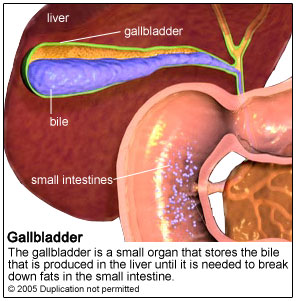Gallbladder Surgery
Gallbladder surgery is a procedure used to treat conditions that affect the gallbladder, which stores excess bile not immediately needed for digestion. Also known as cholecystectomy, it is most often performed to treat gallstones that trigger symptoms and conditions such as pancreatitis. About 500,000 Americans have this surgery every year in the United States, according to the National Institute of Diabetes and Digestive and Kidney Diseases (NIDDK).
..
Gallstones are formed from either cholesterol or bilirubin. The gallbladder may contain a few or many gallstones, which can range in size from microscopic to several inches in diameter. Gallstones may develop in people of any age, gender or ethnic background.
The surgery can be performed as either laparoscopy or traditional open surgery. In laparoscopy, surgery is performed using a thin tube that is attached to a camera and inserted into the body. Because this technique uses small incisions, it is not necessary to cut the abdominal muscles. This reduces scarring and the potential for post-surgical pain and complications.
In some cases, infection or other obstacles (such as severe inflammation of the gallbladder or scarring from other surgeries) may prevent use of laparoscopy and require that open surgery be performed. This is major surgery and will require an extended hospital stay and recovery period. About 5 percent of all cholecystectomies are performed using an open surgery technique, according to the NIDDK.In addition to gallstones, other conditions treated through this technique include gallbladder cancer, inflammation or infection of the gallbladder (cholecystitis), and abnormal gallbladder function (biliary dyskinesia).
..
To view information on another disease, click on Pancreatitis SOD Library.!
..

No comments:
Post a Comment